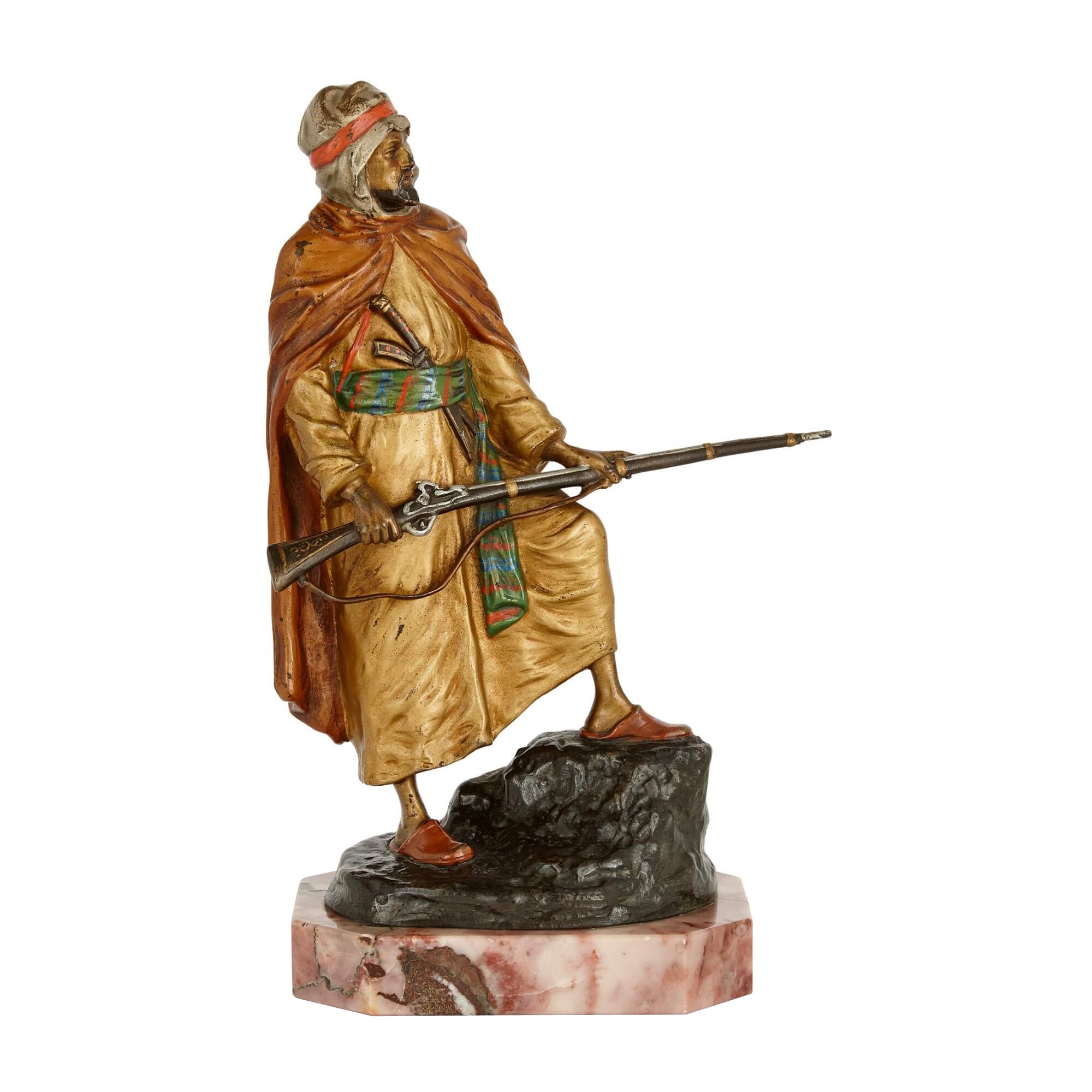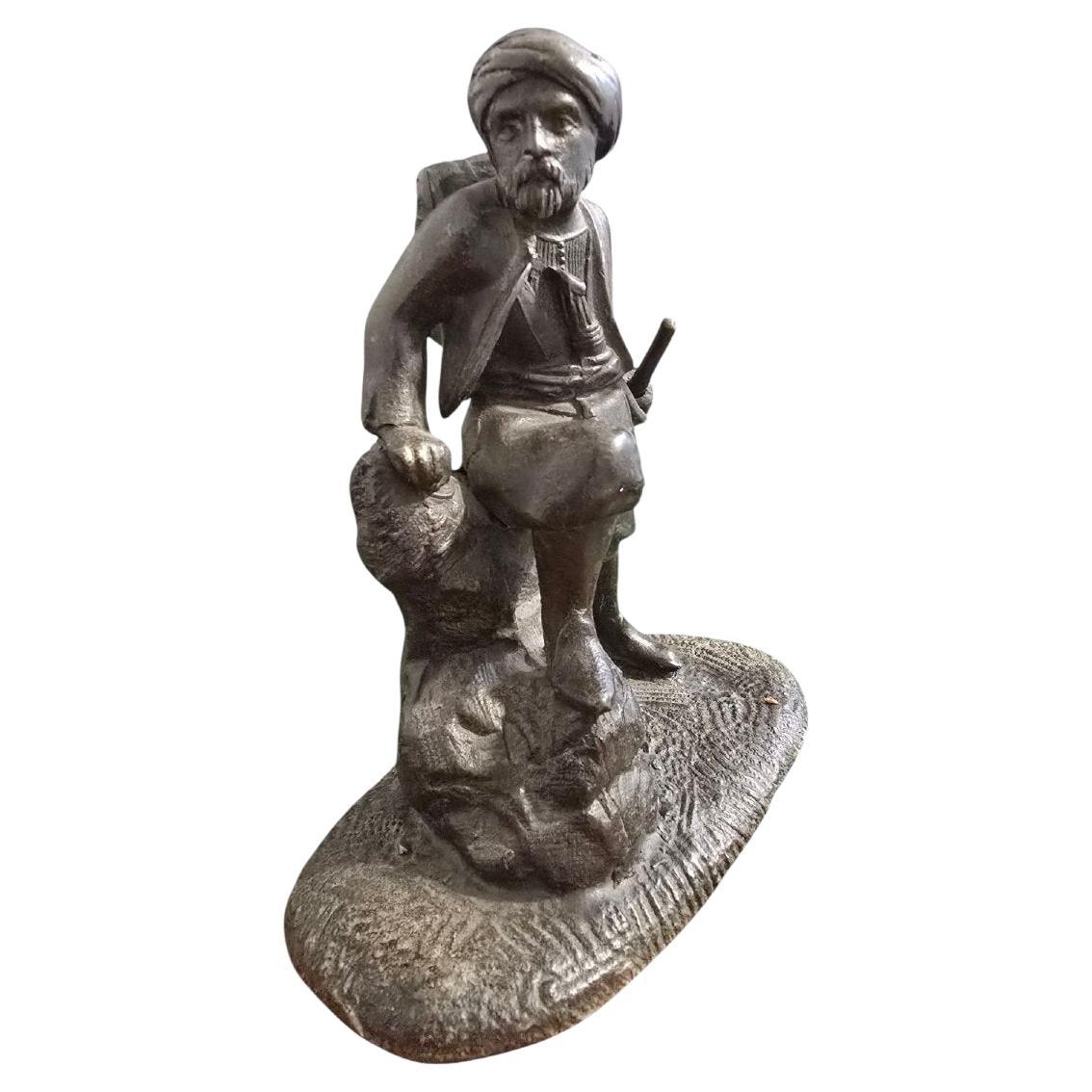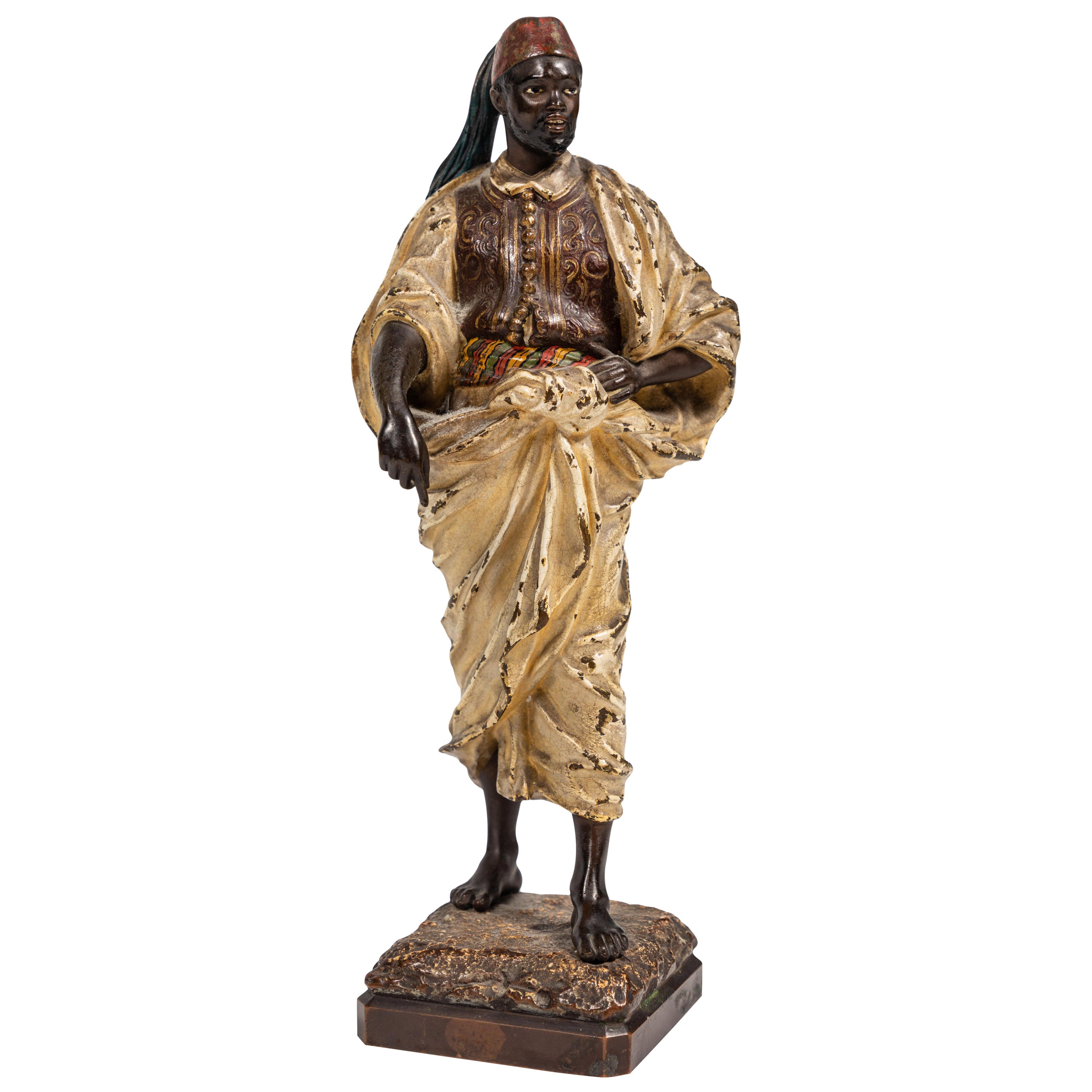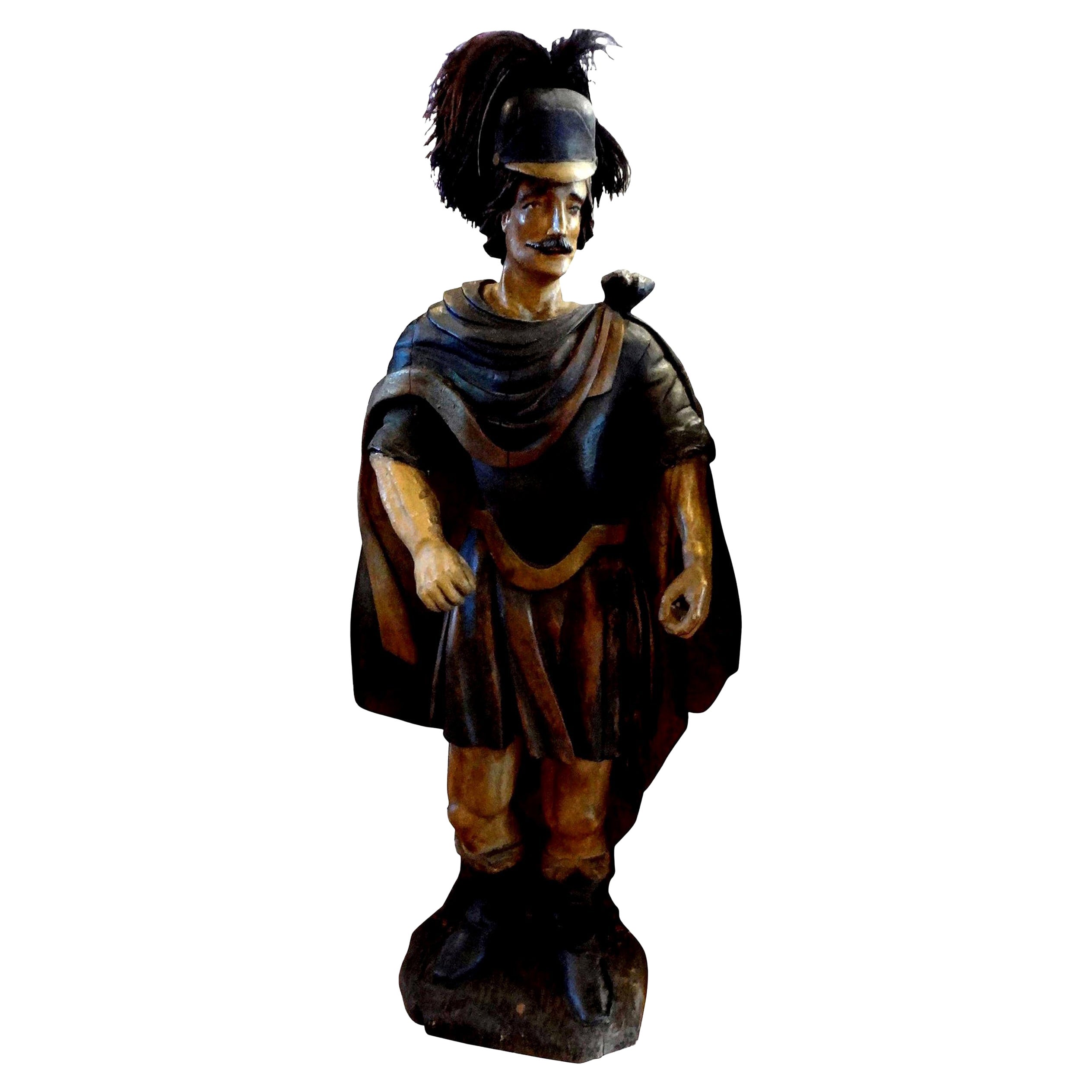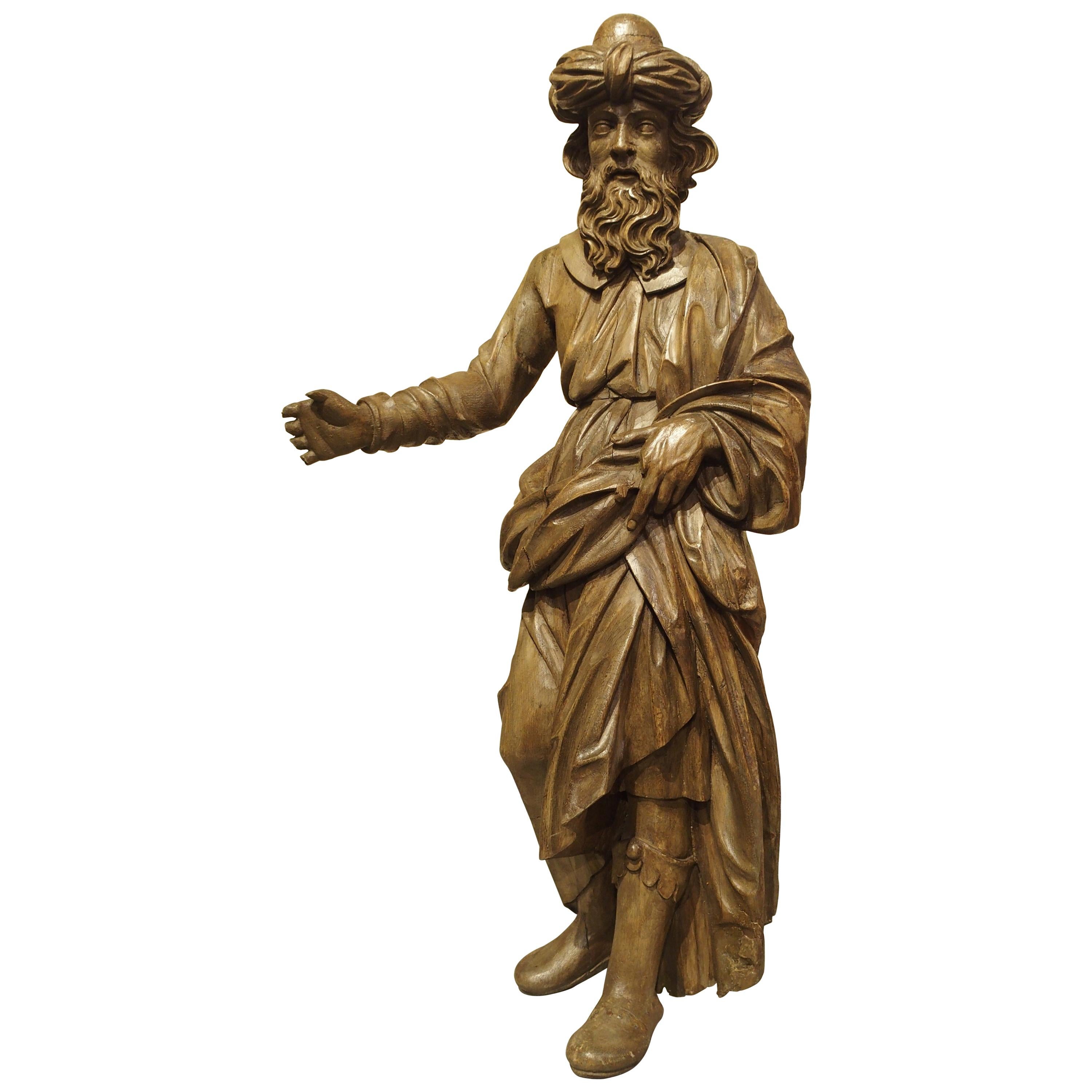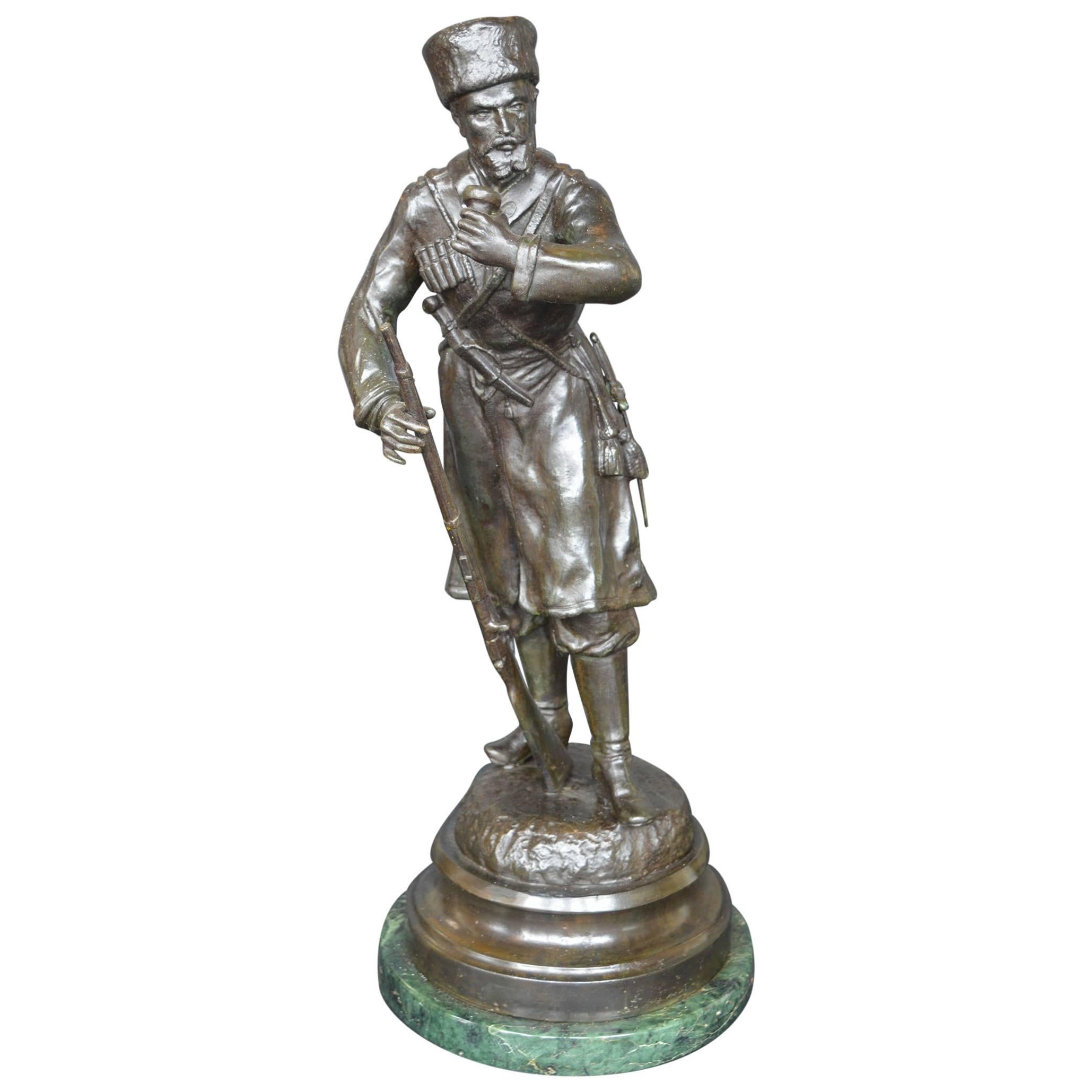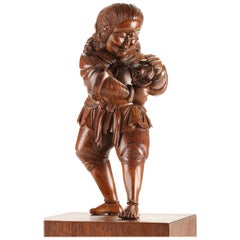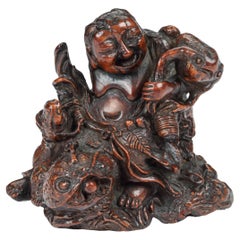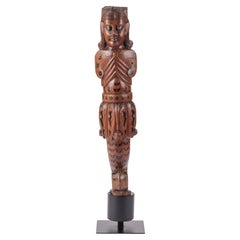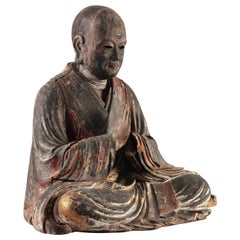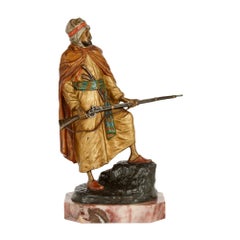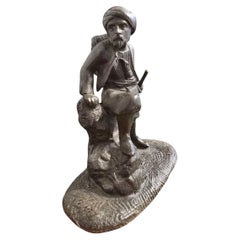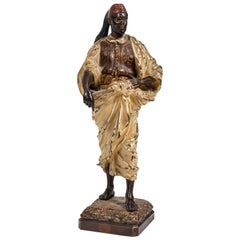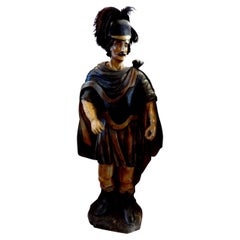Items Similar to Orientalist Turkomania Wood Sculpture of an Ottoman, Early 19th Century
Want more images or videos?
Request additional images or videos from the seller
1 of 2
Orientalist Turkomania Wood Sculpture of an Ottoman, Early 19th Century
$14,285.78
£10,618.22
€12,000
CA$19,724.73
A$21,873.27
CHF 11,492.78
MX$267,254.22
NOK 143,790.39
SEK 134,971.84
DKK 91,374
About the Item
A carved and painted wood 'TURKOMANIA' sculpture of an ottoman soldier
French or Dutch Turkomania, early 19th century
Depicted in standing position, with a sword in one hand and a club in the raised other, with a fur hat, long moustache and long coat, on a square base.
Measures: H. 58 cm
Note:
During the Dutch War of Independence from 1568 till 1648, the Dutch and Turks were allies against Roman Catholic Spain and the slogan of the Dutch was “liever Turks dan Paaps” (rather Muslim than Roman Catholic).
In 1612 the first Dutch ambassador arrived in Istanbul. Nevertheless, in Holland, there was also the image of the cruel and heretic Turk stemming from the frequent violent clashes between Dutch ships and the pirates from Algiers, usually called the “Turkish pirates”. When the Ottoman armies advanced against Vienna, in the eyes of many Europeans the Islam bent on destroying Christianity. Later in the early 19th century, although the Turkish threat to Europe was long gone, the image of the Turks deteriorated again because of the Greek uprising.
The Sultan Mahmud II understood that Turkey had to modernize along West European lines and among other things in 1808 he replaced the “picturesque” oriental clothing style with Western style clothing of black narrow legged trowsers, a high buttoned coat (stamboulis) and a fez instead of a turban; the clothing style of the present sculpture. In the 19th century the Ottoman Empire had become the “sick man of Europe”, posing no threat any longer, and “Turkomania”, interest in the exotic culture of the Ottoman Empire, became a trend in Europe. For instance toys in the form of (speaking) Turks became popular.
- Dimensions:Height: 22.84 in (58 cm)Width: 5.91 in (15 cm)Depth: 5.91 in (15 cm)
- Materials and Techniques:Wood,Polychromed
- Place of Origin:
- Period:
- Date of Manufacture:1800-1820
- Condition:Repaired: The raised hand with club has an old restoration with rope. Can be restored, but we prefer to keep it this way since it is a very old restoration. Wear consistent with age and use. Minor losses. Minor structural damages.
- Seller Location:Amsterdam, NL
- Reference Number:1stDibs: LU5458220857462
About the Seller
5.0
Recognized Seller
These prestigious sellers are industry leaders and represent the highest echelon for item quality and design.
Established in 1985
1stDibs seller since 2020
23 sales on 1stDibs
Typical response time: 5 hours
- ShippingRetrieving quote...Shipping from: Amsterdam, Netherlands
- Return Policy
Authenticity Guarantee
In the unlikely event there’s an issue with an item’s authenticity, contact us within 1 year for a full refund. DetailsMoney-Back Guarantee
If your item is not as described, is damaged in transit, or does not arrive, contact us within 7 days for a full refund. Details24-Hour Cancellation
You have a 24-hour grace period in which to reconsider your purchase, with no questions asked.Vetted Professional Sellers
Our world-class sellers must adhere to strict standards for service and quality, maintaining the integrity of our listings.Price-Match Guarantee
If you find that a seller listed the same item for a lower price elsewhere, we’ll match it.Trusted Global Delivery
Our best-in-class carrier network provides specialized shipping options worldwide, including custom delivery.More From This Seller
View AllJapanese Sculpture Okimono of a Dutchman, Dutch Colonial, 18th Century
Located in Amsterdam, NL
An extremely rare wood Japanese Okimono of a Dutchman playing with a bat
Edo period, 18th-19th century or earlier
The Dutchman is standing and h...
Category
Antique Early 18th Century Japanese Edo Sculptures and Carvings
Materials
Boxwood
A Japanese rootwood sculpture of Gama Sennin
Located in Amsterdam, NL
Edo period, 18th century
H. 11 x W. 15 cm
Sennin’s are ascetics living as hermits in the mountains, ascribed with magic powers. This Sennin is sitting between rocks on a huge grim-...
Category
Antique 18th Century Japanese Sculptures and Carvings
Materials
Wood
Splendid Indo-Portuguese Colonial Sculpture of Nagini from Goa, 17th Century
Located in Amsterdam, NL
A fine Indo-Portuguese inlaid teak wood figure of Nagini
India, Goa, 17th century
Measure: H. 55 cm
(with stand, and with ring for wall hanging)
The sculpture can be perceived as such but probably is one of four legs of an Indo-Portuguese contador...
Category
Antique 17th Century Indian Jewelry Boxes
Materials
Teak, Ebony
Japanese Kamakura/Muromachi Period Cedarwood Buddhist Priest, 12th-15th Century
Located in Amsterdam, NL
Seated Buddhist priest
Japan, Kamakura period (1185-1333) or Muromachi period (1333-1573).
Different carved hollow blocks of cedar wood joined togeth...
Category
Antique 15th Century and Earlier Japanese Sculptures and Carvings
Materials
Cedar
A Nias 'Adu Zatua' wooden ancestor sculpture
Located in Amsterdam, NL
Indonesia, Nias, 19th century
H. 37.5 x W. 10 cm
Sculptures like the one present are not only decorative items but are believed to be vessels that house the spirits of ancestors and are used to communicate with them.
After the death of a person a wooden image or Adu Zatua was made to mediate between the human world and the spiritual realm. These kinds of figures were commissioned by noble Nias families, whereas simple and lesser quality carvings generally were found among lower class families.
In this particularly fine example, the sculptor has paid careful attention to the proportions of the different parts of the body, dividing it into three main sections – the head, the torso, and the legs. The shapes are sometimes flat, round, or have notches, but all are perfectly in balance creating a certain divine tranquillity. This Adua Zatua’s ears are decorated with earrings, and it is wearing a headdress, pointing towards a chiefly provenance.
In 1914 the Dutch gained complete control of the island of Nias and started spreading Protestant Christianity. Many ancestor statues...
Category
Antique 19th Century Indonesian Tribal Art
Materials
Wood
Early Papua Korwar Statue, Collection of Missionary Starrenburg, Collected 1909
Located in Amsterdam, NL
A Papua wood figure of a Korwar
North West Irian Jaya, Vogelkop area, coastal Geelvink Bay, present-day Cenderawasih Bay, early 20th century
The seated Korwar is holding an ope...
Category
Early 20th Century Indonesian Tribal Tribal Art
Materials
Wood
You May Also Like
Large Austrian Figurative Cold-Painted Bronze Sculpture
Located in London, GB
Large Austrian figurative cold-painted bronze sculpture
Austrian, c. 1910
Height 25cm, width 17cm, depth 9cm
This cold-painted bronze sculptu...
Category
Early 20th Century Austrian Islamic Figurative Sculptures
Materials
Marble, Bronze
Sculpture of an Algerian Zouave – 19th Century
Located in Madrid, ES
An interesting 19th-century patinated metal sculpture depicting an Algerian Zouave soldier in combat posture, belonging to the famous colonial units that formed part of the French ar...
Category
Antique 19th Century French Modern Figurative Sculptures
Materials
Metal
1900s Cold-Painted Statue of Arab
Located in Los Angeles, CA
Hand painted figure of an Arab man. Early 1900s. European. Not sure of origin. Signed by artist: "WEEGON" Some losses to the original paint. Very handsome figure.
Category
Early 20th Century European Aesthetic Movement Figurative Sculptures
Materials
Metal
18th Century, Spanish Conquistador Carved Wood Figure
Located in Houston, TX
18th century Spanish Conquistador carved wood figure.
18th century Carved and painted wood Spanish Conquistador figure or sculpture. This beautif...
Category
Antique 18th Century Spanish Baroque Figurative Sculptures
Materials
Wood
18th Century Carved Wooden Statue from France
Located in Dallas, TX
This antique French hand carved wooden statue is of a bearded man wearing a robe tied at the waist with a long scarf draped over his shoulder...
Category
Antique 18th Century French Sculptures
Materials
Wood
19th Century Russian Bronze Sculpture
Located in Los Angeles, CA
Russian bronze sculpture on a marble base. Signed LAAHCEPE.
Category
Antique 19th Century Russian Figurative Sculptures
Materials
Bronze
More Ways To Browse
Dutch Ship
Exotic Wood Objects
Antique Ottoman Empire
Wood Soldier
Wood Sword
Roman Wood Sculptures
Islamic Ottoman
Oriental Sculpture
Islamic Wood
Hand Carved Wood Sculpture Man
Antique French Ottoman
Ottoman Sultan
Soldier Sculptures
Carved Wood Ottomans
Dutch Polychrome
Spain Polychrome Sculpture
Antique French Toy
Catholic Wood Carved
